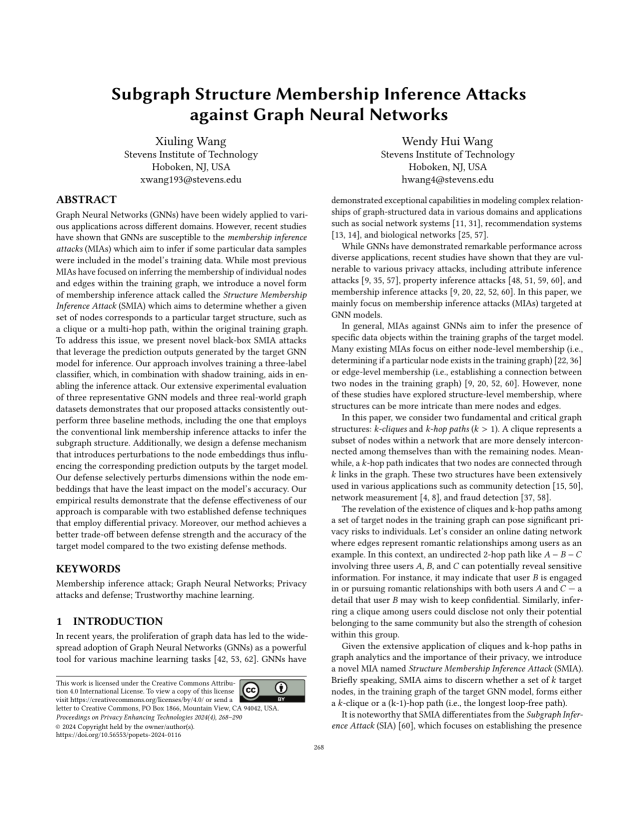Subgraph Structure Membership Inference Attacks against Graph Neural Networks
Authors: Xiuling Wang (Stevens Institute of Technology), Wendy Hui Wang (Stevens Institute of Technology)
Volume: 2024
Issue: 4
Pages: 268–290
DOI: https://doi.org/10.56553/popets-2024-0116
Abstract: Graph Neural Networks (GNNs) have been widely applied to various applications across different domains. However, recent studies have shown that GNNs are susceptible to the membership inference attacks (MIAs) which aim to infer if some particular data samples were included in the model’s training data. While most previous MIAs have focused on inferring the membership of individual nodes and edges within the training graph, we introduce a novel form of membership inference attack called the Structure Membership Inference Attack (SMIA) which aims to determine whether a given set of nodes corresponds to a particular target structure, such as a clique or a multi-hop path, within the original training graph. To address this issue, we present novel black-box SMIA attacks that leverage the prediction outputs generated by the target GNN model for inference. Our approach involves training a three-label classifier, which, in combination with shadow training, aids in enabling the inference attack. Our extensive experimental evaluation of three representative GNN models and three real-world graph datasets demonstrates that our proposed attacks consistently outperform three baseline methods, including the one that employs the conventional link membership inference attacks to infer the subgraph structure. Additionally, we design a defense mechanism that introduces perturbations to the node embeddings thus influencing the corresponding prediction outputs by the target model. Our defense selectively perturbs dimensions within the node embeddings that have the least impact on the model's accuracy. Our empirical results demonstrate that the defense effectiveness of our approach is comparable with two established defense techniques that employ differential privacy. Moreover, our method achieves a better trade-off between defense strength and the accuracy of the target model compared to the two existing defense methods.
Keywords: Membership inference attacks, Graph Neural Networks, Privacy attacks and defense, Trustworthy machine learning
Copyright in PoPETs articles are held by their authors. This article is published under a Creative Commons Attribution 4.0 license.

